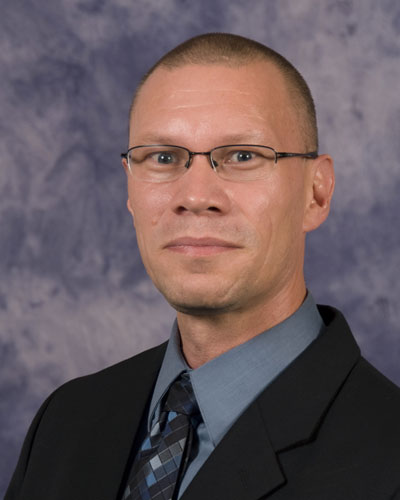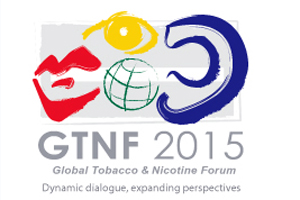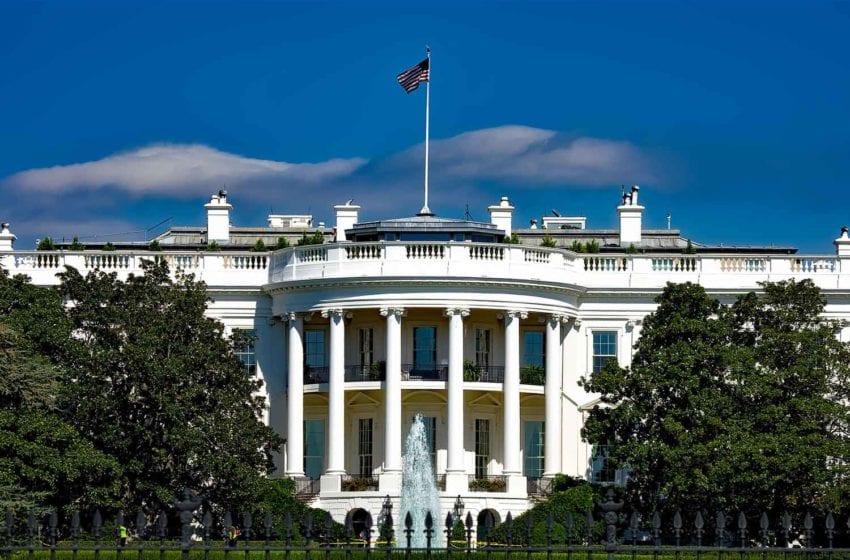
Convening in Bologna, industry stakeholders detect a win-win-win scenario—provided that certain conditions are met.
By Taco Tuinstra
Held Sept. 15–17 in Bologna, Italy, the Global Tobacco & Nicotine Forum (GTNF) took place shortly after Public Health England’s remarkable acknowledgment that e-cigarettes are substantially safer than their combustible counterparts—the strongest such recognition yet by a prominent government-sponsored agency. The announcement fit into a pattern that many GTNF participants had already detected but that hard-line industry critics remain reluctant to acknowledge: the unprecedented alignment of commercial, consumer and public-health interests.
The win-win-win scenario was cited repeatedly throughout the conference. But even as speakers extolled the potential for tobacco harm reduction, they recognized that the window of opportunity is small and that the hope represented by next-generation tobacco products could easily be extinguished by ill-conceived regulation, excessive taxation and misinformation.
The Bologna gathering was the sixth iteration of the event, which Tobacco Reporter pioneered in 2008 under the name Global Tobacco Networking Forum. After its debut in Rio de Janeiro, subsequent GTNFs in Bangalore, India (2010); Antwerp, Belgium (2012); Cape Town, South Africa (2013); and West Virginia, USA (2014) each attracted a greater diversity of participants than the one before it. In addition to senior executives from the tobacco and vapor industries, the 2015 forum brought together suppliers, academics, public health advocates, government officials, consumer groups and representatives of the financial community, among others, demonstrating that these widely divergent groups now have more in common than ever.
The “tobacco” industry, of course, has changed significantly since 2008. Many of today’s products—vaporizers, tobacco heating devices, nicotine strips, etc.—bear little resemblance to combustible cigarettes; some don’t even contain tobacco. In recognition of the evolving market, Tobacco Reporter, at the urging of the GTNF advisory board, changed the name Global Tobacco Networking Forum to Global Tobacco & Nicotine Forum.
The Bologna forum was the first to convene under the new moniker. It also marked the end of David O’Reilly’s tenure as chairman of the GTNF advisory board (also see sidebar). O’Reilly, who is group scientific director and R&D director at British American Tobacco (BAT), has led the GTNF board for the past two years and is credited with elevating the event to new heights, bringing in speakers of unprecedented caliber and fostering top-notch discussions.
Tobacco Reporter’s publisher and global events director, Elise Rasmussen, presented O’Reilly with a plaque to thank him for his guidance and leadership. She also gave him an inscribed silver tankard, teasing that if he wasn’t already a drinker, the GTNF-related stresses and responsibilities would have surely driven him to become one. O’Reilly’s successor as GTNF advisory board chairman is Mark Kehaya, chairman of Alliance One International.
Like previous GTNFs, the Bologna event was hosted by Patrick Basham of the Democracy Institute, a think tank with offices in London and Washington, D.C. Basham jokingly compared his recurring performances to those of Sisyphus, a Greek mythological figured condemned to repeatedly push a boulder up a hill, only to watch it roll back down.
He said Bologna was an inspired choice as host for the GTNF. Affectionately known as La Dotta—“the learned”—the city is home to the Western world’s first university, established in the 11th century. (Bologna is sometimes also referred to as La Grassa—“the fat”—for its fine cuisine, and La Rossa—“the red”—for its characteristically colored roofs and left-leaning politics. But while the food served during the GTNF more than lived up to the city’s reputation, none of the speakers advocated greater state intervention.)
The Bologna region later stood at the cradle of the Renaissance, a period of scientific revolution, skepticism of authority and respect for individuals—beliefs that are now under threat, according to Basham. Describing the present as “the age of unreason,” Basham bemoaned what he saw as a push to limit choice and thwart technology, particularly in the tobacco and nicotine sectors. Basham insisted that progress would happen only through innovation, reminding his audience that “the Stone Age did not end for lack of stone.”
The themes of innovation and reasonable regulation were echoed by Marco Mariotti, senior vice president of corporate affairs at Philip Morris International (PMI). Now is an important time for the industry, he noted, with tobacco harm reduction objectives and commercial objectives starting to align.
While combustible cigarettes are likely to remain at the core of PMI’s business for years, the company has been investing heavily in next-generation products. In 2014, PMI launched its revolutionary iQOS product (manufactured near Bologna), which heats rather than burns tobacco, and as a result greatly reduces the smoker’s exposure to toxicants. The heat-not-burn principle, of course, has been tried—and abandoned—before, but advances in technology suggest the current generation of products stands a greater chance of being accepted by both regulators and consumers.
Mariotti said governments have three options when dealing with new technologies—they can stop, slow down or accelerate their development. Unsurprisingly, Mariotti preferred the last: “Regulators should incentivize smokers and innovation,” he said. “They must promote trials, allow communication and set high standards—but not so high as to discourage innovation.”
The next speaker, Japan Tobacco International’s (JTI) senior vice president of global leaf, Paul Neumann, covered another issue prominently on the minds of many attendees—sustainability. In 2009, the cigarette manufacturer entered the leaf tobacco business through the purchase of Tribac and Kannenberg, among other initiatives. But contrary to what some might think, saving money was not the objective, according to Neumann. “The purpose was to take responsibility and secure a long-term supply of tobacco,” he said. Among other things, this meant addressing environmental and governance issues, such as deforestation and child labor. The company also wanted to send a message to growers that tobacco farming, if done properly, can be profitable. From JTI’s perspective that entails being loyal and paying fairly, according to Neumann. “We are working to make the tobacco supply chain a model for other agricultural businesses,” he said.
Sticking with the topic of leaf tobacco, Airton Hentschke, senior vice president and chief operating officer of Universal Corp., detailed his company’s efforts to increase the efficiency of its field operations through technology. Following the philosophy that you cannot manage what you cannot measure, the company pioneered an information technology system, Mobileaf, that allows it to gather and process field data in real time using computer tablets connected to a central database. The reduction in paperwork, together with the higher quality of information, allows the company to better plan its operations, respond faster to field developments and, ultimately, produce tobacco more cost-effectively. Mobileaf is also a boon to traceability, a topic that will become even more important as Universal expands into the liquid nicotine business.
Wan Saiful Wan Jan, CEO of the Institute for Democracy and Economic Affairs, a pro-market think tank based in Kuala Lumpur, Malaysia, said he had been surprised to receive an invitation to speak at the GTNF, the conference of a “sin industry.” But after contemplating the location—“a city with so many churches”—he had felt comfortable accepting, quipping that finding redemption would be easy in Bologna. Wan said he was not a supporter of the tobacco industry—just like he didn’t support the pharmaceutical or automotive sectors. “In fact, I don’t support any industry,” he said. “But I support the market and consumers’ right to choose.”
Wan cautioned against the habit of multinational companies operating in developing countries—particularly in Southeast Asia—to speak only to government representatives. While businesses happily engage with civil society in developed countries, he observed, their views mysteriously change “on the flight from Washington or London.” As a result, when issues come up in the developing world, companies have little leverage to influence policies.
The recent calls in Southeast Asia to exclude tobacco from free trade agreements are a case in point, according to Wan. “The industry has few friends left who are willing speak up for it,” he said. Wan suggested tobacco companies change their strategies. “It’s not enough to talk to power. You must engage the public and hope for more organizations complementing our work.”
The ensuing panel discussion on trade issues saw an impassioned plea by Francois van der Merwe, chairman and CEO of the Tobacco Institute of South Africa, to protect the most vulnerable members of the tobacco supply chain—farmers. “It’s easy to talk about the impact of trade from air-conditioned offices in Geneva,” he thundered. “We must make governments recognize the contributions of tobacco.” The damage done to farming communities by extreme anti-tobacco measures is greater than the advantage to public health, according to Van der Merwe. “The industry must draw a line in the sand.”
Karen Blakeley, a senior lecturer at Winchester Business School, led an inspiring discussion about ethics, a field that deals with issues of right and wrong but is easily confused with questions of, say, what is practical. Needless to say, the issue of ethics features prominently in the tobacco industry, whose products—especially its combustible ones—present a well-established risk to health. But while the tobacco industry has contributed to the problem, some suggest it is increasingly part of the solution, as new technologies have enabled the development of potentially less-harmful products.
Kgosi Letlape, president of the African Medical Association, reminded the panelists of the doctor’s oath, which is “do no harm,” rather than “do less harm”—but then he quickly pointed out that doctors practice harm reduction already, because that’s all they can do. “In the end, people die anyway,” Letlape said. The question for tobacco ethicists, he explained, is how to deal with human vice and reduce suffering. Clive Bates, director of Counterfactual, presented the audience with a thought experiment: Would you accept half the number of smokers if it meant twice the number of nicotine users? Developing harm-reduction products makes sense from both a commercial and an ethical standpoint, the panelists agreed.
Day 2
The second GTNF day had the same format as the first, featuring a plenary session focusing on the industry’s grand themes in the morning followed by breakout sessions on more narrowly defined topics in the afternoon (to read more about individual breakout sessions, please visit www.gtnf-2015.com).
Kingsley Wheaton, managing director of next-generation products at BAT, kicked off the morning with what he described as a reassuring yet challenging message.
Over the past three years, BAT has invested a staggering $750 million in researching and developing next-generation products. Eager to lead the segment, the company aims to offer consumers a choice of products across the risk the continuum, including vapor, tobacco-heating and licensed medicinal products. According to Wheaton, BAT was the first international tobacco company to launch an e-cigarette (Vype). Its licensed medicinal product (Voke) will be the world’s first cigarette-shaped, breath-activated nicotine inhalation product. Later this year, BAT plans to test-market a tobacco-heating product.
While combustible cigarettes—the product ranking highest on the risk continuum—would remain the mainstay of BAT’s commercial delivery for a long time, that business also generated the funding required to develop less-harmful next-generation products, noted Wheaton.
Wheaton believes that next-generation products have the potential to create a win-win-win situation—a win for society as public health aims are advanced, a win for consumers as exciting new products become available and a win for shareholders as sustainable value is generated.
However, for next-generation products to deliver on their promise, he said, several conditions would need to be met: Companies would need to have the freedom to develop and market compelling products, governments would need to enact appropriate regulatory frameworks to ensure consumer safety, a “coalition of the willing” should communicate cohesively on the benefits of next-generation products, and fiscal treatment should be aligned with the continuum.
Providing useful context to the discussions about next-generation products, Jack Henningfield, vice president of research, health policy and abuse liability at Pinney Associates, reviewed the history of tobacco harm reduction. Henningfield disagrees with the often-heard criticism that harm reduction undermines smoking cessation, which is generally accepted as the healthiest course of action. Harm reduction, he said, is practiced successfully in many areas, such as when motorcyclists wear helmets or intravenous drug users participate in needle-exchange programs or use government-approved replacement drugs for heroin.
Encouraged by the U.S. government, tobacco companies in the 1950s and 1960s focused on reducing tar deliveries through filtration and other technologies. “Light” cigarettes did not result in lower rates of smoking-related disease, however, and as a result developed a bad reputation in the tobacco control community. In the 1980s a consensus emerged that harm reduction had failed. Pharmaceutical companies stepped into the void with nicotine-replacement therapies (NRT), but with limited success. Regulators resisted the use of NRT as a harm reduction tool to reduce smoking.
Henningfield suggested smoking cessation should be viewed as a means, not an end, to better health. Endorsing harm reduction for those who can’t or won’t quit is a potentially important complementary means to better health, he said.
The 2009 U.S. Family Smoking Prevention and Tobacco Control Act includes harm reduction, but with very high standards—a fact that Henningfield attributed to lingering mistrust of the tobacco industry.
E-cigarettes provide the best harm-reduction opportunity yet, according to Henningfield, but they have divided the public health community and confused regulators, leading to travesties such as vapers being forced to use their devices in smoking rooms, where they are exposed to the very toxins they want to avoid.
Henningfield pled for urgent product-performance standards and for cooperation among stakeholders to help tobacco harm reduction efforts succeed. “Together we can do this,” he said.
In a passionate presentation, Patricia Kovacevic, general counsel and chief compliance officer at Nicopure Labs, in the U.S., urged the audience to avoid a future characterized by aggressive over-regulation, or even full-blown prohibition, and help bring about a scenario of sustainability and growth, while improving consumers’ quality of life and enjoyment.
Kovacevic recalled how, growing up in communist Romania, she became fascinated with Umberto Eco, a novelist, philosopher and semiotician, perhaps best known for his book The Name of the Rose. (Eco is also president of the Bologna University Graduate School for the Study of Humanities.) “Some girls at 14 wanted to meet Michael Jackson; I wanted to meet Umberto Eco,” she said. So her mother brought her to Bologna twice—but each time it was summer so the university was not in session. Finally, in the early 1990s, she came to Bologna by herself and managed to listen to one of Eco’s lectures.
Kovacevic said the episode taught her two things—that perseverance can get you anywhere and that 30 years pass in the blink of an eye.
Using those insights, she speculated on what the tobacco and nicotine industries might look like in 2045. Regulation, said Kovacevic, is the single most important factor in harm reduction today, reminding her audience that, by the time of the next GTNF, e-cigarettes will be regulated in all European countries. Different regulatory outcomes in different jurisdictions could point the industries into opposing directions, however. This, according to Kovacevic, would not be a constructive approach.
Despite the challenges, she expressed cautious optimism about the future. “We have the knowledge, the willpower, the motivation and the resources to act and steer the course toward constructive action, meaningful and sound harm reduction research, toward compelling and long-lasting results.”
Riccardo Polosa, professor of internal medicine at the University of Catania, examined the characteristics of nicotine as the industry is developing methods of “cleaner” nicotine consumption—that is, nicotine without the combustion byproducts that are reckoned to be the major contributor to smoking-related disease. The ensuing public health panel discussion, led by Delon Human, president and CEO of Health Diplomats, touched on the challenges of getting industry research published, the importance of reliable and accurate information on the health effects of e-cigarettes, and the appropriate fiscal treatment of tobacco-related products along the continuum of risk, among other topics.
Having opened the conference the previous day in his role as GTNF advisory board chairman, O’Reilly also delivered the GTNF closing speech, this time as BAT’s group scientific and R&D director.
He called for a reframing of the “endgame” envisioned by some in public health. With the advent of reduced-risk tobacco and nicotine products, O’Reilly said, consumers, industry shareholders and the tobacco control community had arrived at a crossroads where their interests intersect. The tobacco industry had become part of the solution, rather than just the problem. Its formidable research and development capabilities, consumer understanding and financial resources—for the time being still funded mostly by the sale of combustible cigarettes—put it in a unique position to further reduce tobacco-related death and disease by bringing new products to market.
Yet some in the public health community remain stuck in the past, according to O’Reilly. Driven by irrational hatred of the tobacco business and contempt for its consumers, they refuse to engage with the industry, calling even for its eradication. Illustrating his point, O’Reilly reminded his audience of the chilling words spoken by World Health Organization Director-General Margaret Chan during this year’s World Conference on Tobacco or Health: “We should not give up until we make sure the tobacco industry goes out of business.”
O’Reilly was adamant that such reluctance should not be allowed to get in the way of progress. “The market has almost always been a better driver of change generally than government interference, and the potential health benefits to the individual consumer and the economic benefits to the industry present a potential win-win scenario,” he said.
Ending the conference on a positive note, O’Reilly insisted the endgame should be not for the industry but for tobacco-related disease.













